Dusk. The road winds through this cold desert, snow piles tucked in the lee of every sagebrush like the white bottoms of the pronghorn that call this place home. Around a bend, there are fields, dry stubble dotted with mule deer. A hundred, at least, in this one spot.
With sudden purpose, a doe hops the fence and enters the right-of-way. Several others lurk behind, waiting to see what their leader will do. Her antenna-like ears are perked, scooping the hum of the car. She hesitates.
Maybe she will; maybe she won’t. I slow to give her the pause to make her decision. Her safety depends on it. So does mine.
And herein lies the premise: if drivers are moving slowly enough, they will have time to avoid hitting large animals, such as deer and pronghorn, on the road. Drivers who are driving more slowly have a shorter stopping distance – the time it takes to see an animal, hit the brake, and stop.
This premise underlies a question I have heard countless times: why don’t we just reduce the speed limit to solve the problem of animals getting hit by cars?
This is a problem that impacts some 6,000 animals every year here in Wyoming, and 1-2 million more large animals nationwide. The simplicity and logic are naturally appealing. If we can just get people to drive more slowly, we can solve this problem cheaply and easily.
But can we accomplish either? My short answer, based on years of research, is “not likely.”
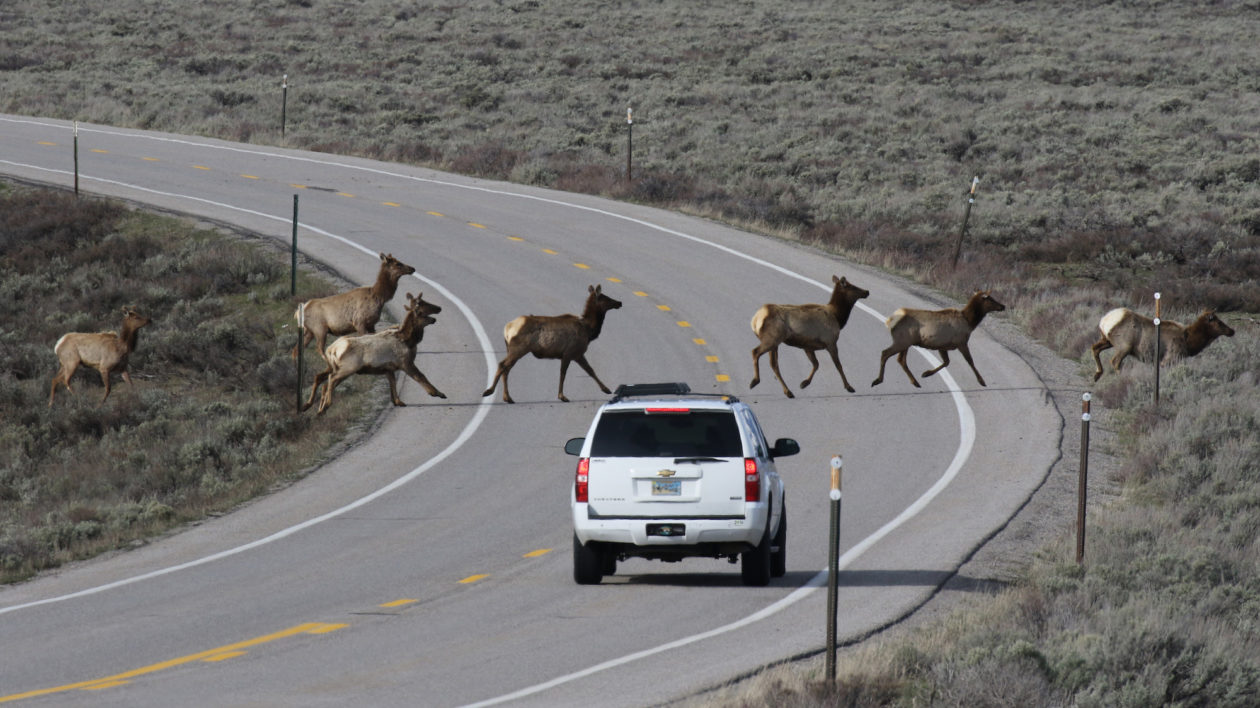
Reducing the Speed Limit Reduces Speed – But Not By Much
I recently wrapped up a large experiment where we tested the effectiveness of reducing the speed limit as a means of reducing wildlife-vehicle collisions.
We found that drivers did slow down, but only by a few miles per hour. We found no fewer wildlife-vehicle collisions or “near misses” (narrow escapes for deer and driver). Instead, we found that the number of cars on the road, rather than the speed limit, mattered quite a bit to deer.
Surprisingly, there has never been a study quite like this before. My team worked with the Wyoming Department of Transportation (WYDOT) to reduce the speed limit from dusk to dawn – when most wildlife-vehicle collisions occur – from 70 mph to 55 mph on six stretches of highway in Wyoming.
From my prior work, we knew that these were “hotspots” of high collisions rates where highways bisect mule deer winter range or migration corridors.
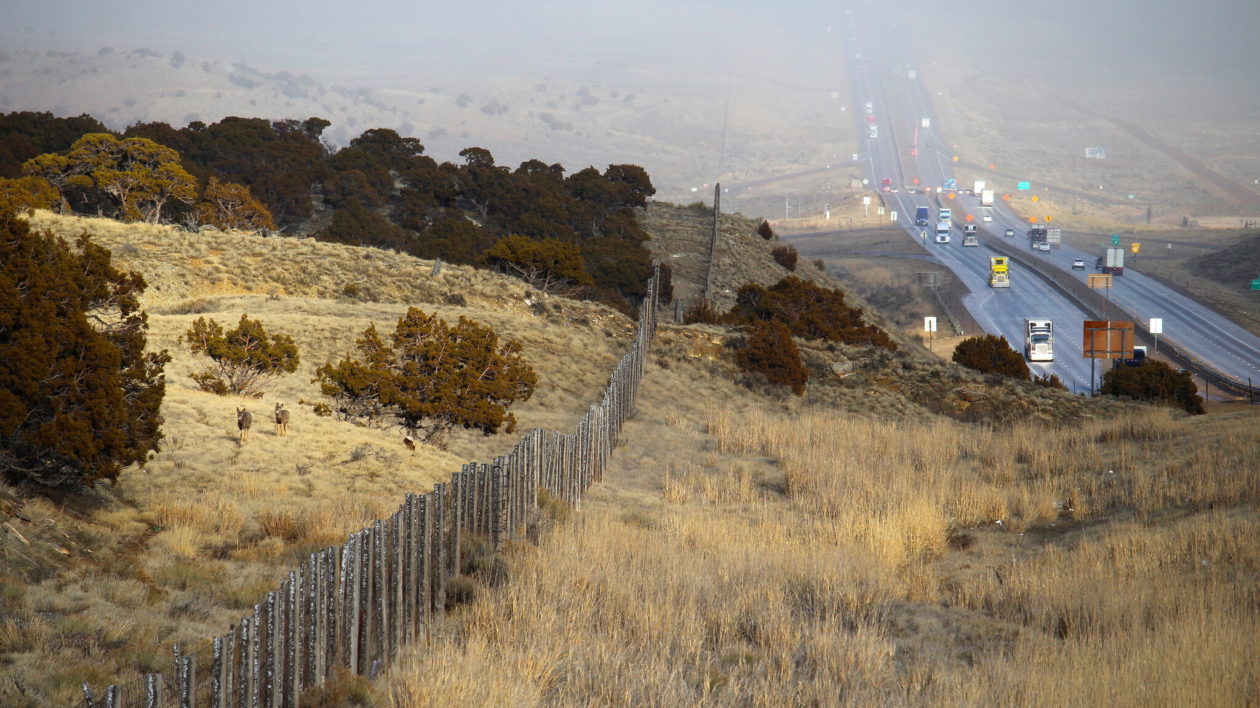
Over two long, cold, Wyoming winters, my team braved the windswept sides of the roads to collect our data. We used radar recorders – handy little black boxes mounted on posts – to record the speed of every vehicle that went by.
We worked with WYDOT and Highway Patrol to get records of every collision that occurred and every dead deer that was found. And we used infrared thermal scopes jerry-rigged to record video footage of deer trying to cross the roads.
The essential results were quite simple: drivers very clearly slowed down when the speed limit was reduced, but only by about 3 to 5 mph – nowhere near the 15 mph reduction in speed limit.
The number of deer hit wasn’t affected by the lowered speed limit, which makes sense; if drivers hardly slowed, why would we expect any fewer collisions or dead deer?
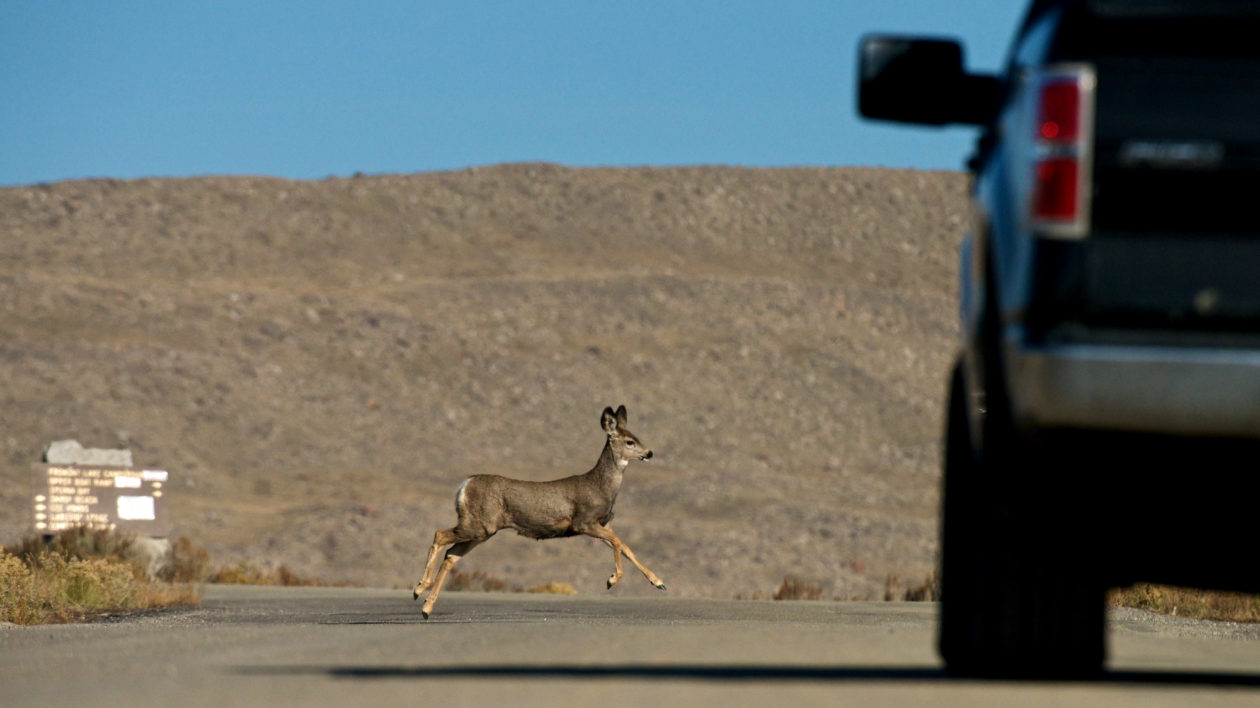
A Break in Traffic
These stark numbers answered our main scientific questions. But we found the real stories in the video clips – stories that played out in the dark, largely unseen by the passing vehicles.
Here we saw deer hopping fences like popcorn kernels. Deer waiting, waiting, waiting for the stream of traffic to break, sticking a hoof in the road, hesitating, turning back, circling around to try again. A doe hit, spinning like a top on the hard road surface, her companion coming to sniff the lifeless friend and wavering there, seemingly uncertain where to go next.
These scenes bring the deer’s plight to life, but they also yield important information. From the footage, we found that deer had to make more attempts to get across the road the more vehicles were present. If the deer had to make four or more attempts to cross, she had a 50 percent chance of giving up all together.
We also found that deer need at least 30 seconds between consecutive vehicles to cross the road safely. Fewer than that, and they almost always wound up getting hit or in a dangerous situation.
More than 60 seconds between vehicles, and the deer almost always crossed safely. This is extremely valuable information because it tells us that, for most of every 24-hour cycle, on most roads in Wyoming and anywhere more populous than Wyoming (okay, so pretty much anywhere), the traffic volume is too high for deer to cross the road safely.
That means that getting people to drive more slowly – even if you could – may never be enough.
The reality is that roads are a major impediment to animal movements. More than the animals that get hit, I worry about the animals that don’t even try to cross. They are the hidden casualties of an increasingly fragmented world that is cutting them off from the food and habitat they need to thrive.

How Does the Deer Cross the Road?
All of this may sound very pessimistic, but I don’t think it is. The good news is that we have a very effective solution to make roads safe for wildlife to cross – and safe for drivers too. Overpasses and underpasses built for wildlife allow animals to cross the road without risk – bringing collision numbers down 80 to 90 percent and enabling animals to move relatively freely.
These “crossing structures” are costly, but they work, and the cost of doing nothing racks up millions of dollars per year in vehicle damage, human injuries, and lost hunting revenues. Knowing that the inexpensive alternatives – as appealing as they are – don’t work, helps to galvanize people around the need for the solutions that do.
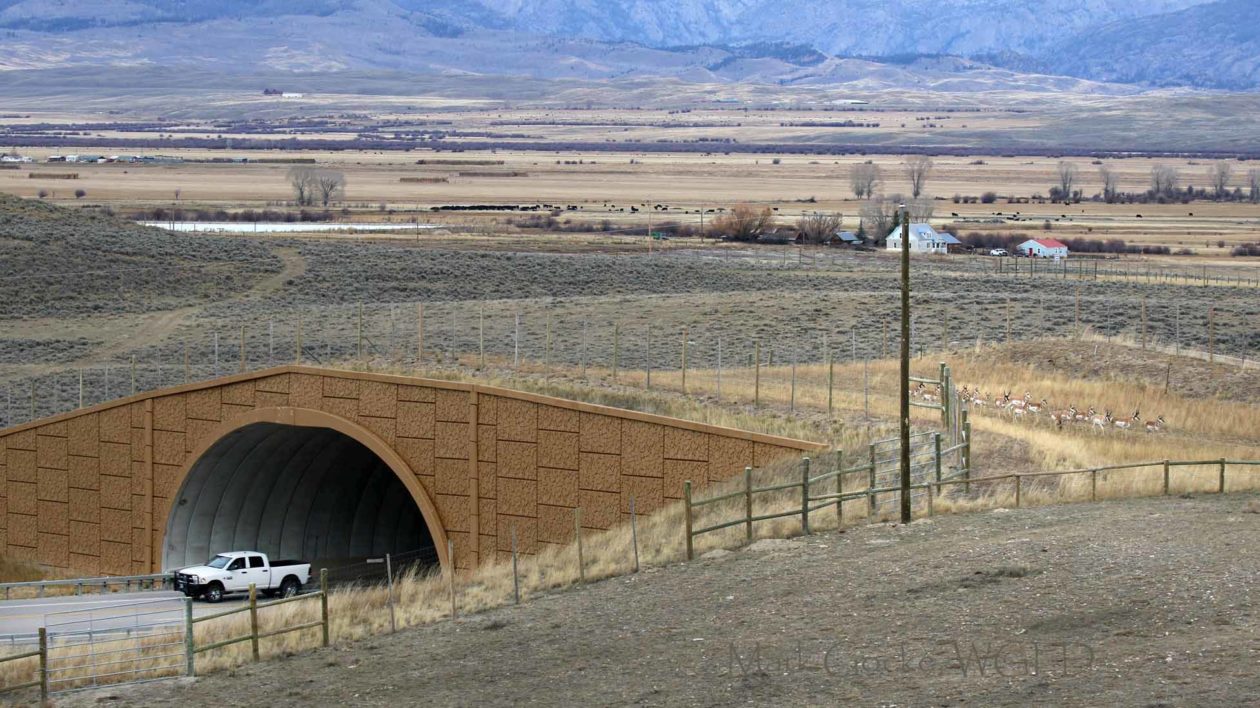
This year in Wyoming, various efforts have raised more than $25 million towards crossing structures. Unlike many conservation challenges, this is one we can engineer our way out of. We can help conserve some of the world’s longest large mammal migrations. We can connect habitats better, making flora and fauna more resilient to climate change and other threats.
I still drive slowly at night through high animal-use areas, and I advise others to do the same. Realistically, we may never get crossing structures in all the places that really need them, just as we may never get all drivers to slow down. But I hope that through research like this, we can make these decisions based on data and not just wishful thinking.
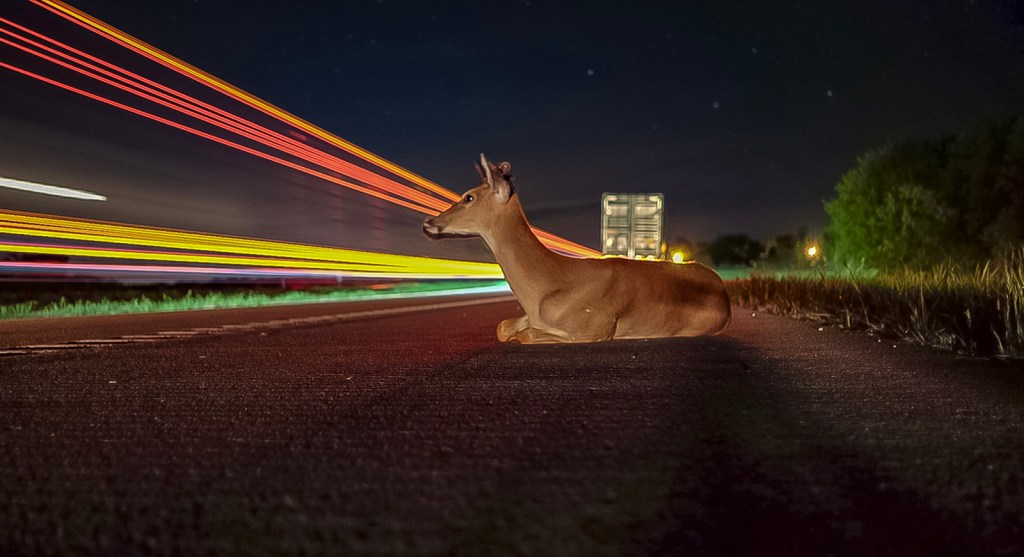


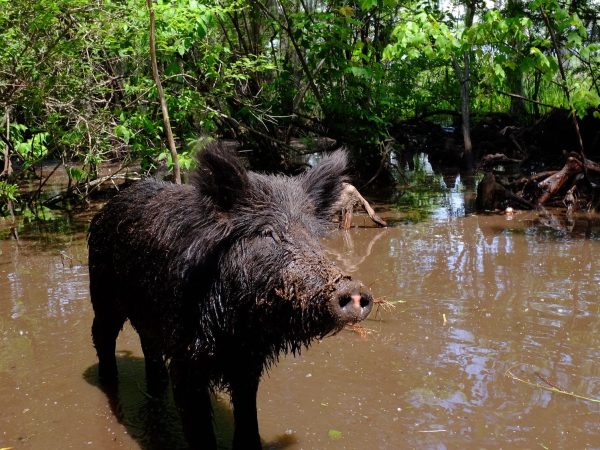
Thank you so much for all of your hard work. I pray we can do this in every state. God bless you and everyone who worked on this research.
I had been wondering if this could help and was sad to see the title. However I would argue that going from 70MPH to 55MPH is effectively no change in speed from the perspective of an animal trying to cross the road. Do any predators of deer routinely attack them at 55MPH?
My understanding is that even humans are terrible at being able to judge speeds of vehicles coming towards them from a distance. Just look at how many vehicles are hit by trains at crossings. Most brains are simply not evolved to quickly understand that input.
Does Corinna Riginos think a further reduction in speed would make a large difference? To a value around what these animals would usually expect from their normal predators?
I’d like to thank Corinna Riginos, Wyoming DoT, and the other researchers involved for a really interesting and neat bit of info.
With people driving around the clock to where-ever and driving at speeds that are insane it is a wonder there is any wildlife left alive. Slowing down is huge to saving animals from road-kill. I have spent my entire life in big-game country and if it wasen’t for my constant vigilence of driving slower to where I could avoid a collission with a critter I would have ran over hundreds. So, I disagree with you there totally. Encouraging people to not drive at the most critical times of wildlife travel, early morning and late afternoon and evening. Building wildlife over and under passes saves thousands of critters every year. Teaching people how to be aware of wildlife as when to be driving and what to look for. Eyes shining in your headlights ahead of you can help mavoid a collission. And realizing that your behavior can make the difference between hitting an animal and not. Armed with this information can help you avoid hitting an animal 99.9% of the time.
Seems like there may be an opportunity to develop wildlife traffic pauses for highway traffic to come to a stop every so often, guided by computer and linked to wildlife detection devices
Thanks for sharing it with us. Hope people will be aware of the logic it makes in reducing the speed limit.
The key is enforcement. I know for a fact that if I go slower I am better able to respond to wildlife crossing in front of me – and I spend many hours driving at night in forested areas. To say it doesn’t matter because people don’t slow down is just saying we are not enforcing speed limits. That is different than saying it doesn’t work. Wildlife overpasses are great, especially on identified corridor routes, but not practical to install along tens of thousands of miles of high speed roads.
In the meantime speed cameras could enforce the reduced speeds that you tried to achieve ie a camera and a sign ‘speed camera zone next … miles’. After all the goal is to reduce speed not generate tickets.
Halting traffic at peak times for a minute or 2 every 15 – 30 minutes would create good gaps in the traffic for animals to cross safely as well, while presumably they wouldn’t try to cross with a slug of traffic passing.
Here in NZ, deer, pigs etc are pests and persecuted, consequently they are rarely seen near major roads. From what I’ve heard not many slow down for penguins but they sure take note of seal signs after hitting their first bull seal!
The author is not a law officer, nor passing judgment, but pointing out facts of behavior by humans and deer.
Nothing is going to be a 100% perfect solution but overpasses for animals seems to be the best especially in high risk areas. My brother and I used to travel to Wyoming to hunt and fish after we had retired and would stay for a month at a time never hit an animal but both of us came close a couple of times even when driving slower (40-45 ),but when an animal comes out of the dark suddenly into the middle of the road it is hard to avoid. And the pucker factor goes up exponentially.
Overpasses and tunnels are the answer. We’ve known this all along. Why isn’t it built in for new projects and installed in existing? Compassion and common sense saves lives, both human and animal.